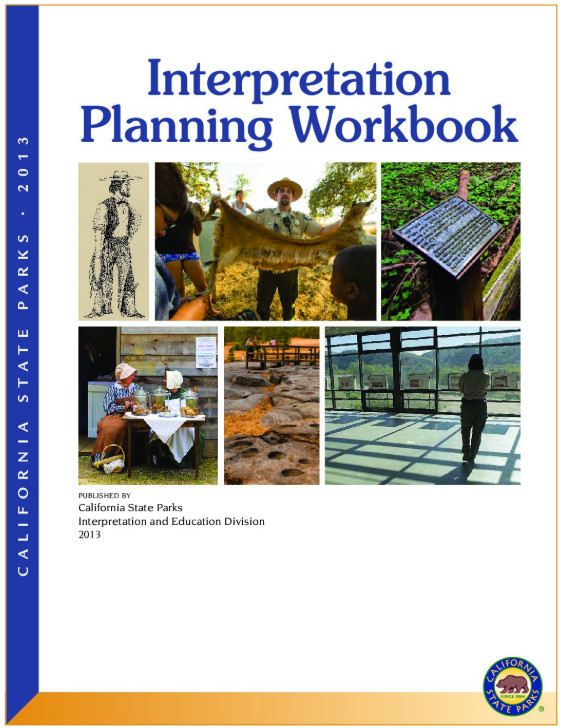
California State Parks Interpretation Planning Workbook (2014)
The Interpretation Planning Workbook covers Interpretation Master Plans, Interpretation Action Plans, Interpretive Prospectuses, and interpretive project and program plans. It was created to help parks professionals develop practical plans. It provides guidance on research and documentation, the planning process, plan structure, and important elements to consider when developing an interpretive plan.
Interpretation Master and Action Plans
Interpretation Master Plans and Interpretation Action Plans were defined in the most recent update of the DOM Interpretation and Education chapter.
An Interpretation Master Plan takes a long-range approach to interpretation planning and may be developed for a unit, sector, or geographical region, or may be used for particular resources found throughout the state. It updates and expands upon the General Plan and is intended to help guide park unit staff toward realizing its vision for interpretation. The Master Plan provides greater background and context, while analyzing existing conditions and looking at opportunities and constraints for expanding interpretation and meeting visitor needs. A Master Plan offers recommendations for facilities, media and programs, with objectives and strategies that are in line with the park unit’s goals and guidelines. The Master Plan can be a stand-alone document or combined with an Action Plan. Master Plans may be used to request and attract funding for project-specific development.
It is strongly recommended that an Interpretation Master Plan be prepared prior to developing any new major interpretive facilities or programs, or an amendment to an existing plan should be put in place if such facilities or programs are not addressed in the existing Master Plan.
An Interpretation Action Plan should follow the development of a Master Plan and may be set up as a stand-alone document. The Action Plan is a “roadmap,” offering a realistic and flexible mechanism for achieving the park unit’s interpretive goals, objectives and strategies. Guided by the Action Plan, park staff can methodically approach interpretive development, adapting to the continuing evolution of the park unit while moving toward the realization of the stakeholders’ shared vision.
